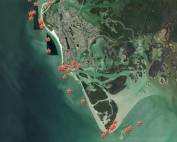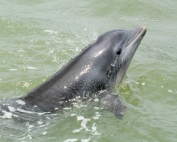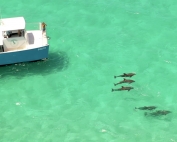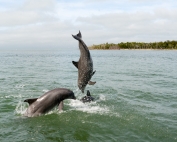The varied foraging techniques of Marco Island’s dolphins
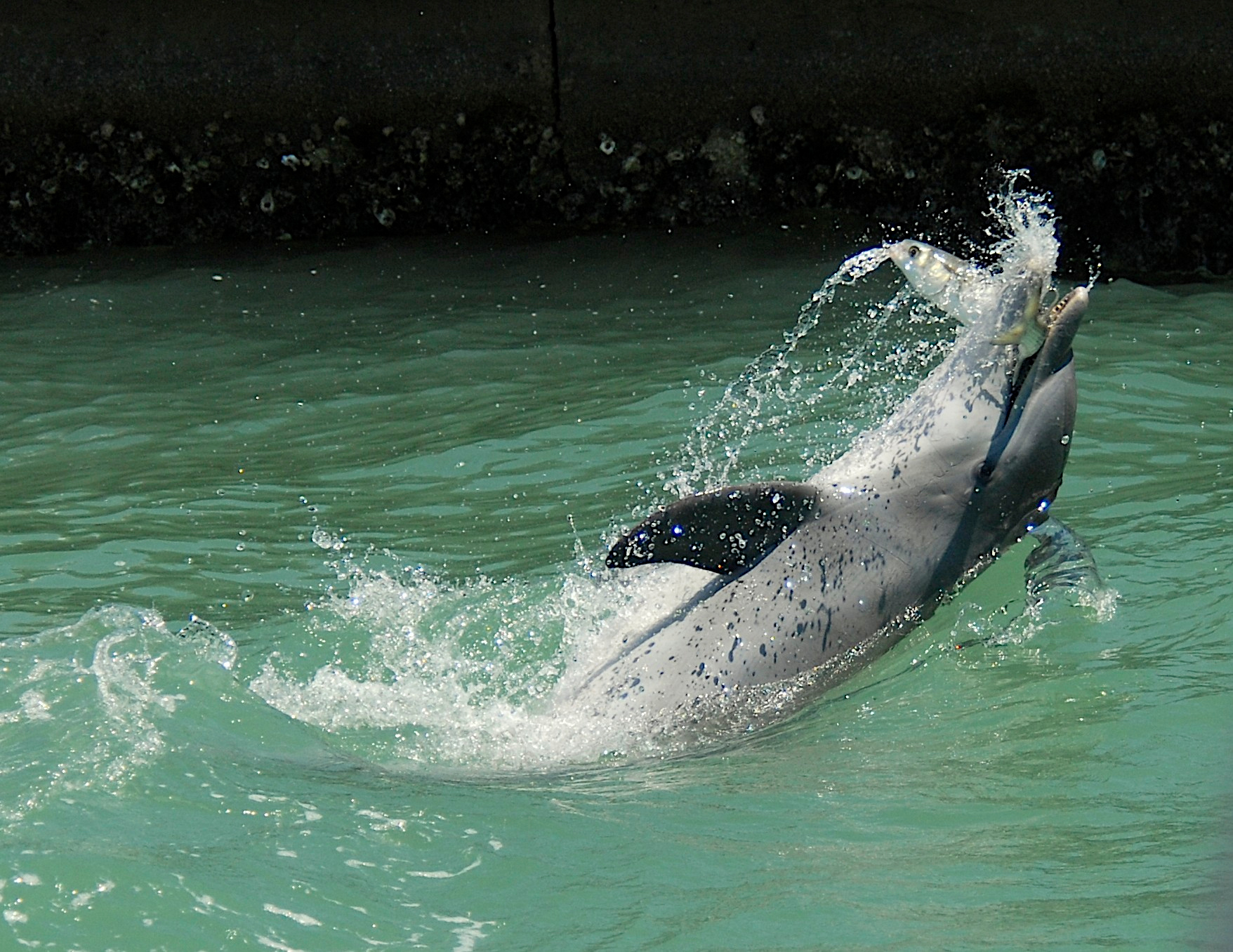
The bottlenose dolphins of southwest Florida have developed a variety of clever foraging techniques. Each is adapted to the specific characteristics of the habitat they call home.
The dolphins that live on the northern end of Marco Island around Big Marco and Capri Pass live in an environment that has been dramatically altered by humans and includes a lot of seawalls.
On the other end of Marco lies Goodland and Coon Key Pass. There the shoreline has maintained its natural characteristics. Instead of unyielding vertical concrete walls, the dolphins there encounter a shoreline dominated by mangroves and, especially at low tide, a very gradual sloping expanse of soft mud.
Several dolphins whose main area of utilization is centered around The Big Marco and Capri Pass (The Dolphin Study Area One) have developed a foraging technique called barrier feeding that puts the seawalls there to good use.
Barrier feeding involves chasing fish up and down their length and using the seawall as a barrier to close off 180 degrees of escape.
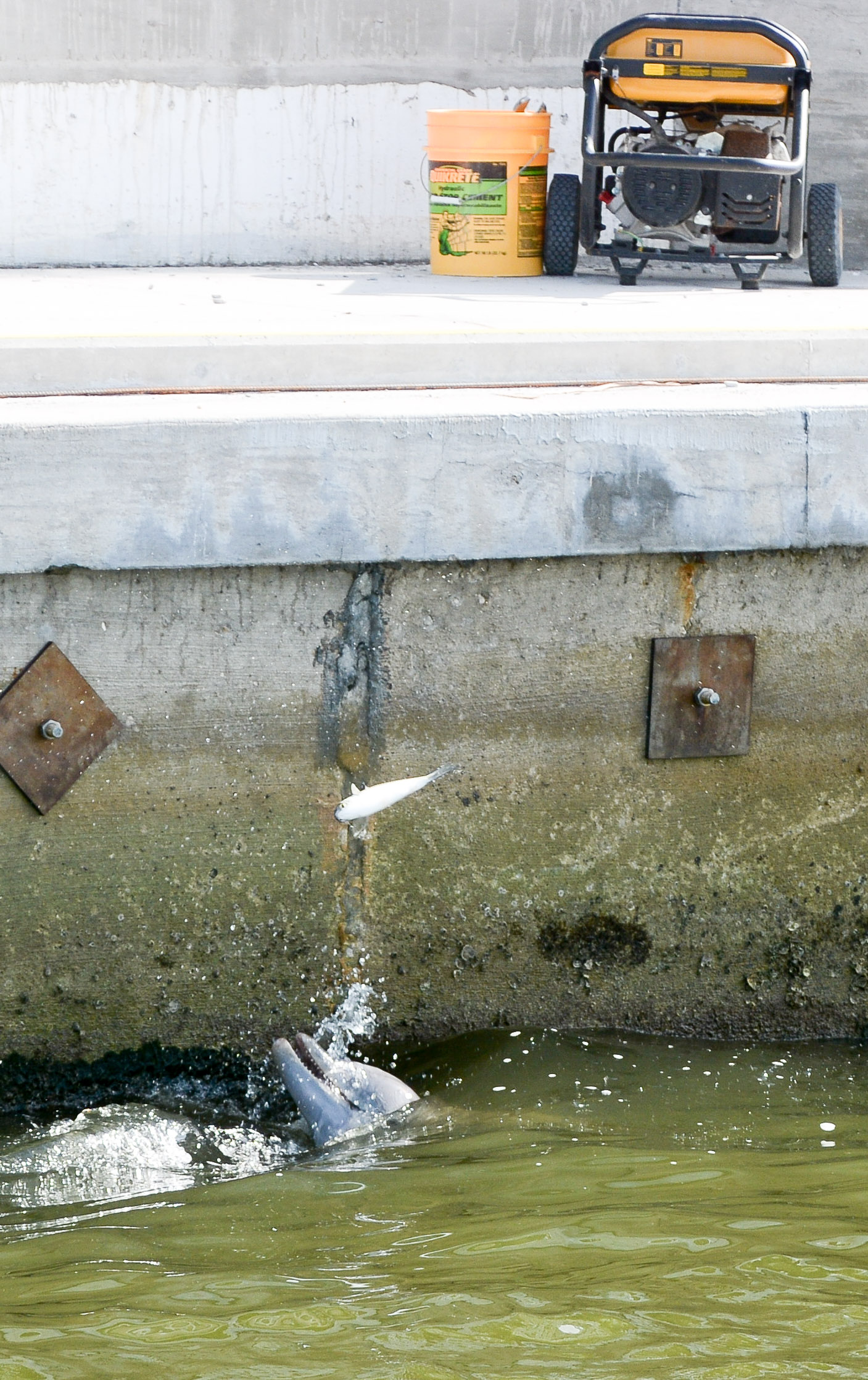
Nowhere to go but up.
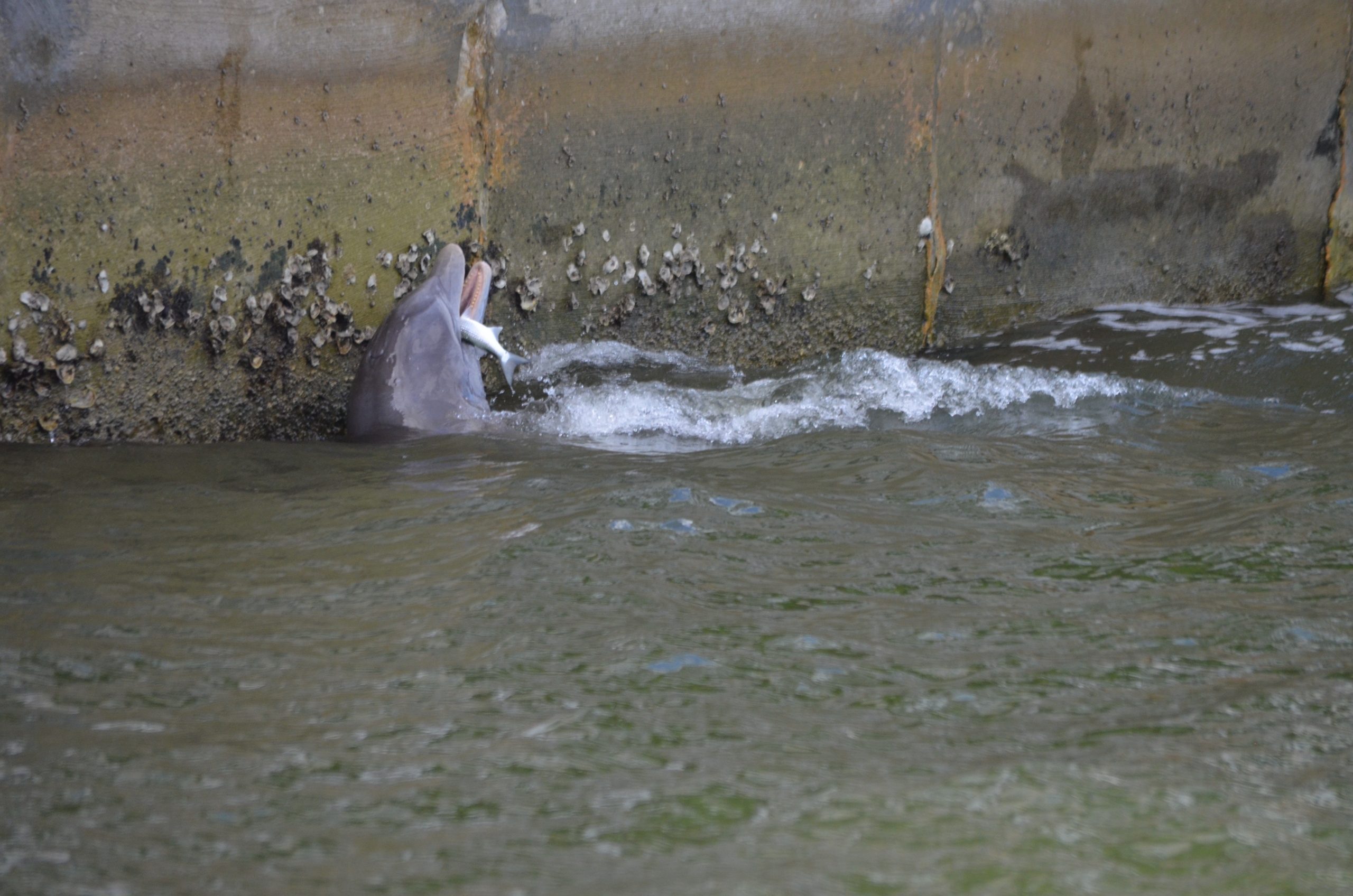
Except that what goes up…
Many Area one dolphins feed along the seawall and docks there but there are a few for whom this is their go to feeding technique. Three come to mind immediately – a pair of adult males named Hatchet and Capri and a female named Halfway. You can see from their sighting history in The Dolphin Study database that they spend a lot of time hanging around a few seawalls in particular.
It must be an effective technique – over the years Halfway has produced enough milk to nurse 6 calves. Each of her surviving offspring are now masters of the seawall. Skipper is one of these dolphins.
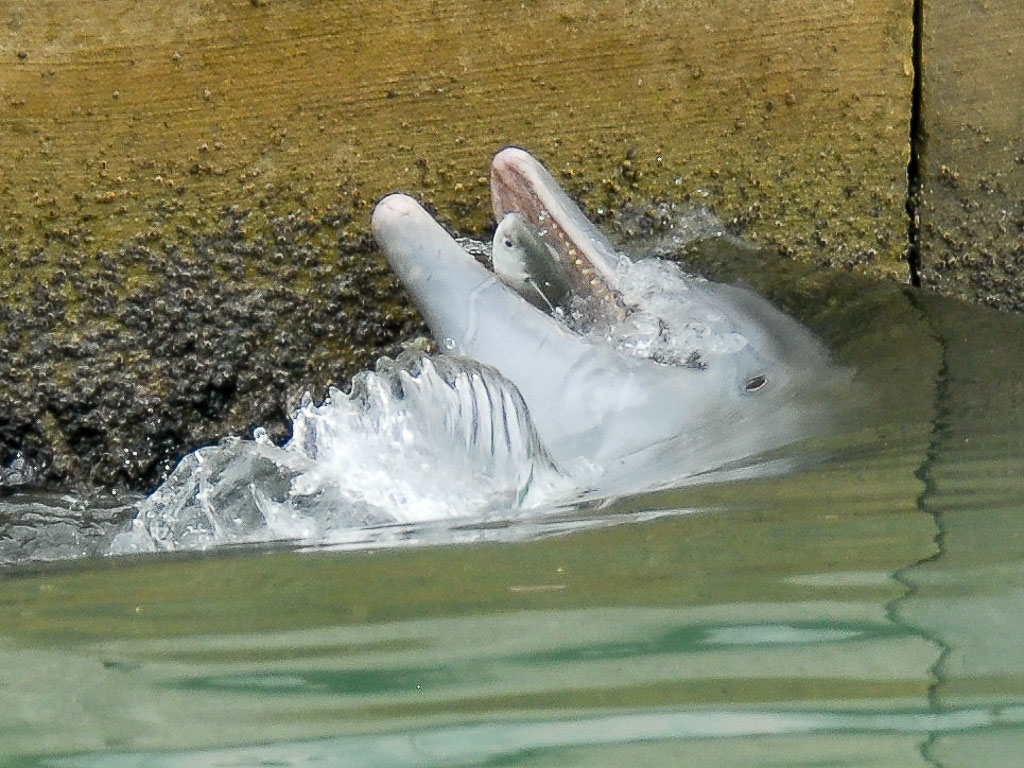
Halfway snags a meal along her favorite seawall.
And it isn’t just small fish they are catching along these walls…
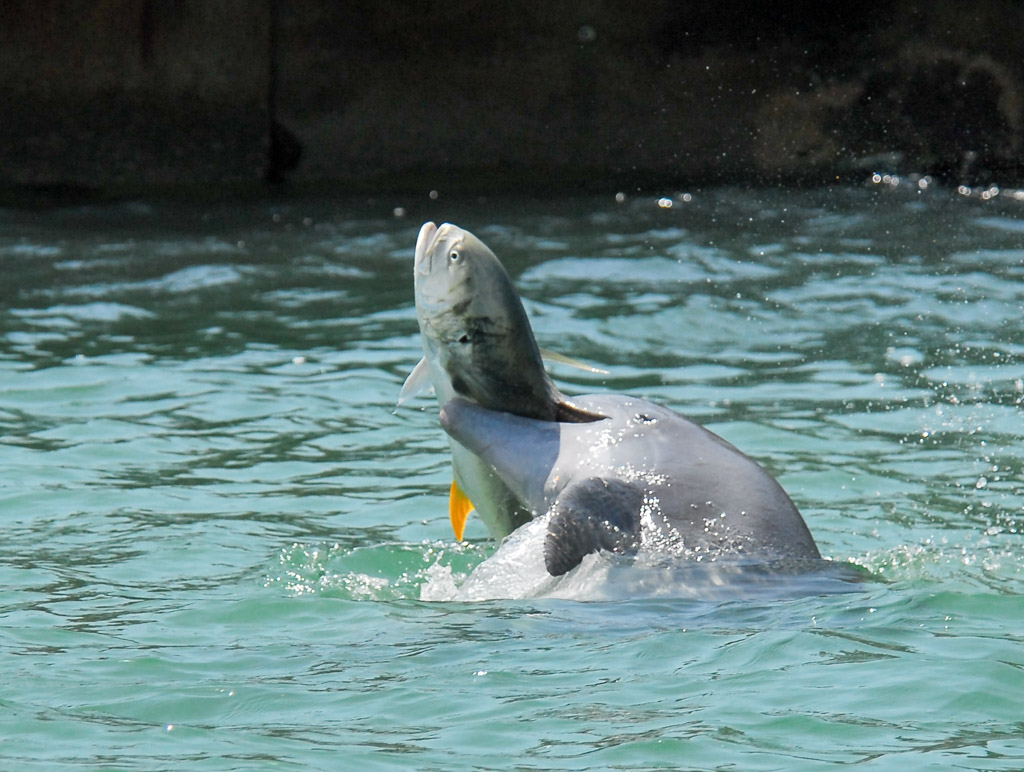
Capri nails a Crevalle jack at the Capri Seawall.
A lot of is made about the intelligence of dolphins, but you have to give the birds their due. The brown pelicans have been paying attention and they have figured out how to make the dolphin’s barrier feeding pay off for them. As the dolphins move up and down the seawall in pursuit of their prey, you will often see the pelicans following along in front of the dolphins. Just as the dolphin is about to make its move, the pelican snatches the fish for itself. Sometimes they watch from the seawall itself and jump in when the fish approaches.
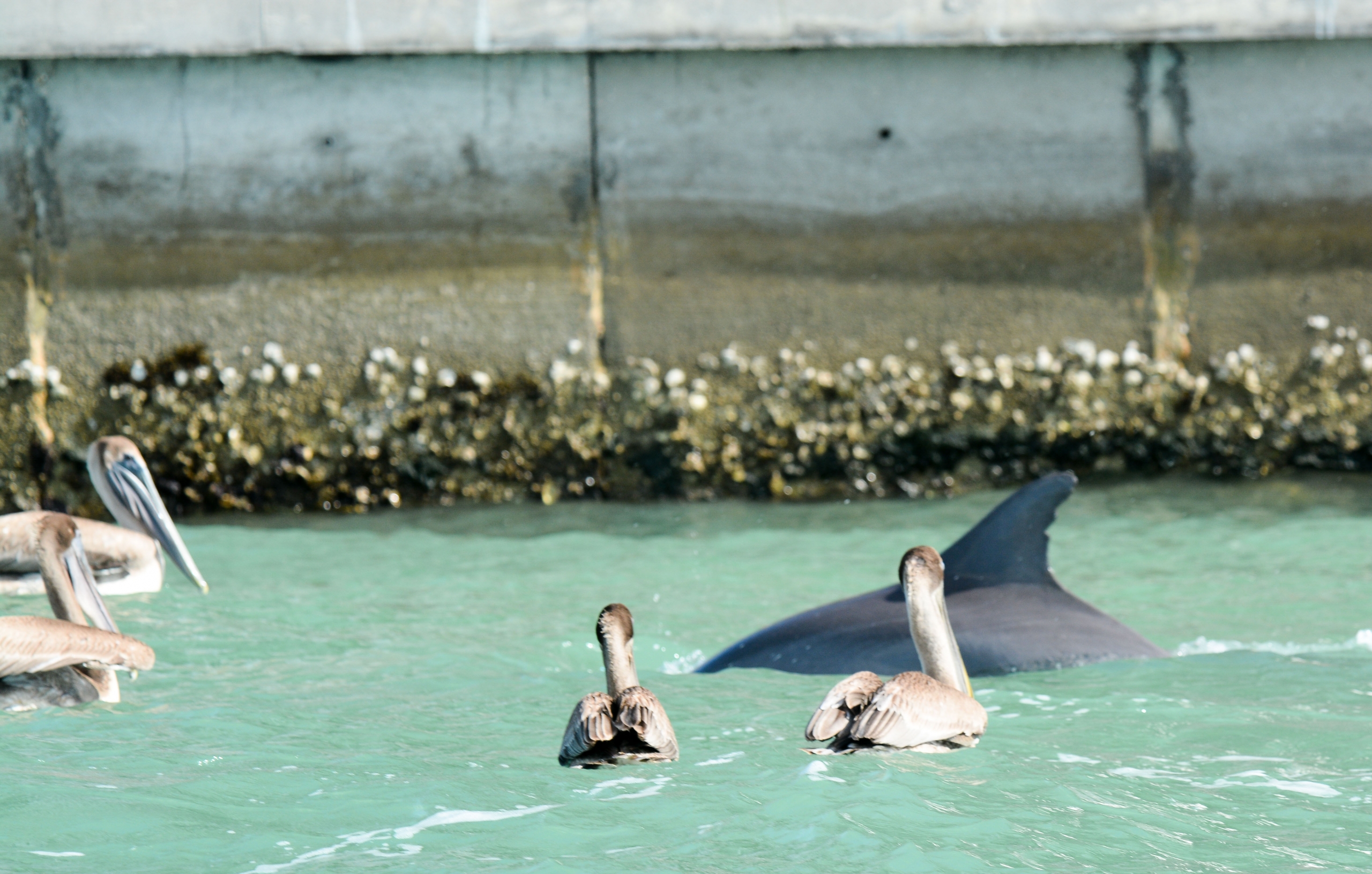
Young brown pelicans show a keen interest in the progress of Hatchet’s hunt.
On the other end of the island from where Hatchet, Capri and Halfway hunt is Coon Key Pass out of Goodland. There, on Tripod Key at the entrance to Coon Key Pass a wide exposed mudflat extends out from the mangroves at low tide. This too is a barrier, but of another sort. And it requires an entirely different approach. Instead of running up and down the length of the barrier, the dolphin races straight at it, driving the prey into ever shallower water.
Adult female Goodsix foraging at Tripod key in Coon Key Pass.
It seems that when the fish realizes it has run out of running room, it panics (if that is the right word) and turns back toward deeper water. The dolphin is right there.
There is a more daring variation on this technique. If there are schools of fish in the area – say mullet – some dolphins will charge the shoreline, turning abruptly as they approach the shore and creating a wave that tosses the fish up onto the mud.
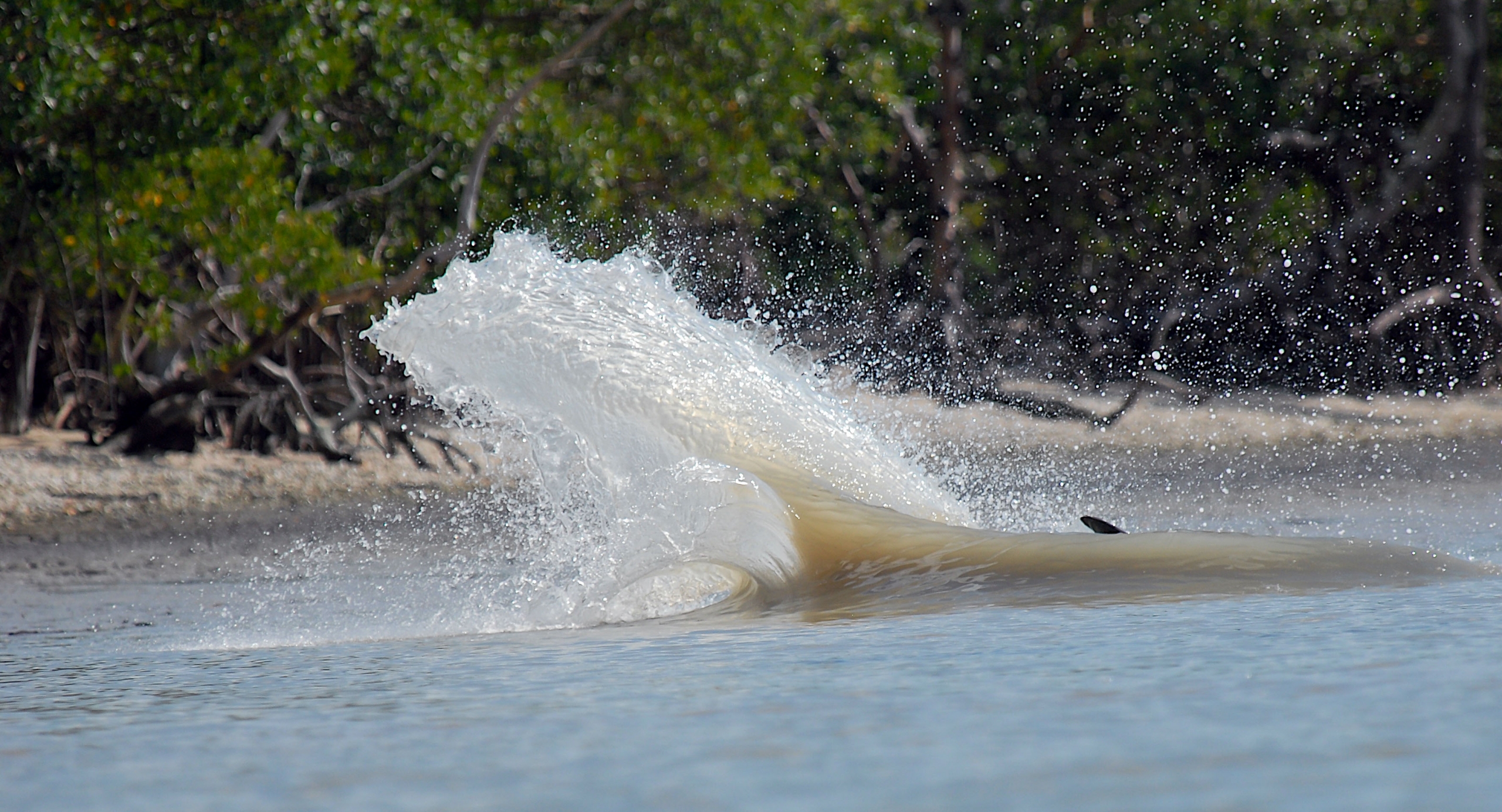
Tripod Key strand feeding photos: Kent Morse
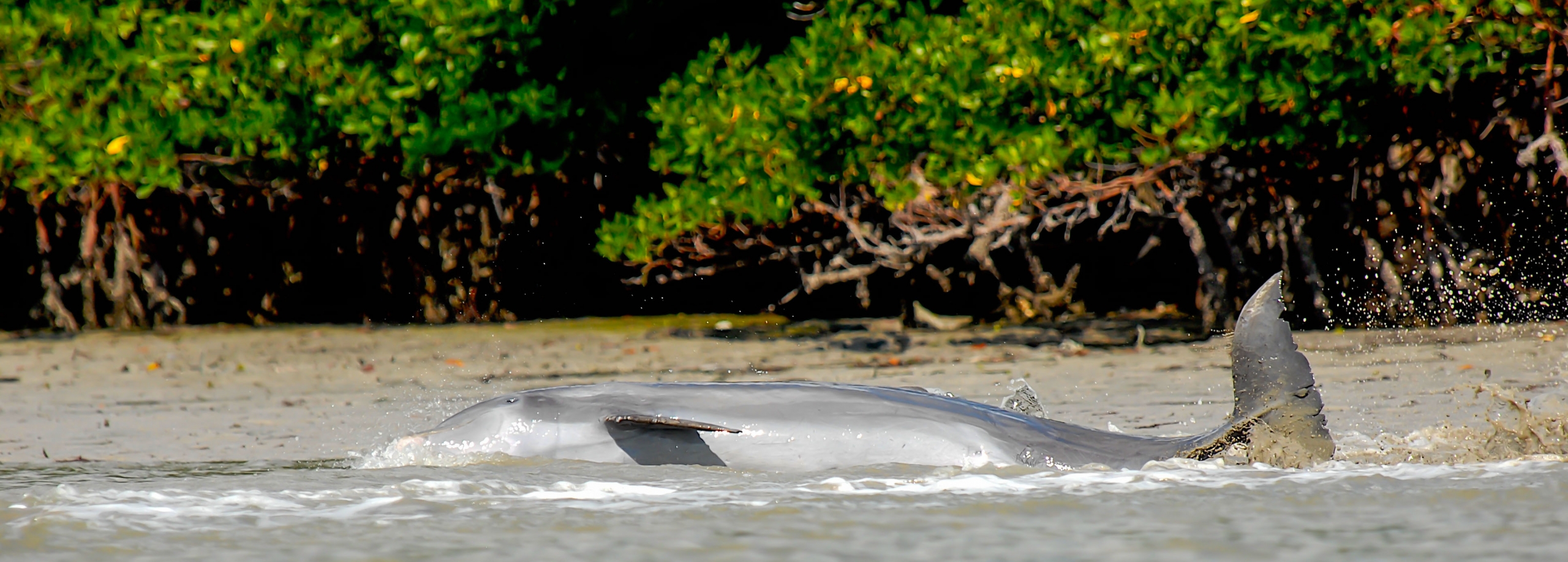
The mullet (or whatever) suddenly finds itself the proverbial fish out of water. The dolphin returns to join it on the mudflat! Then once the fish is in hand or rather mouth…
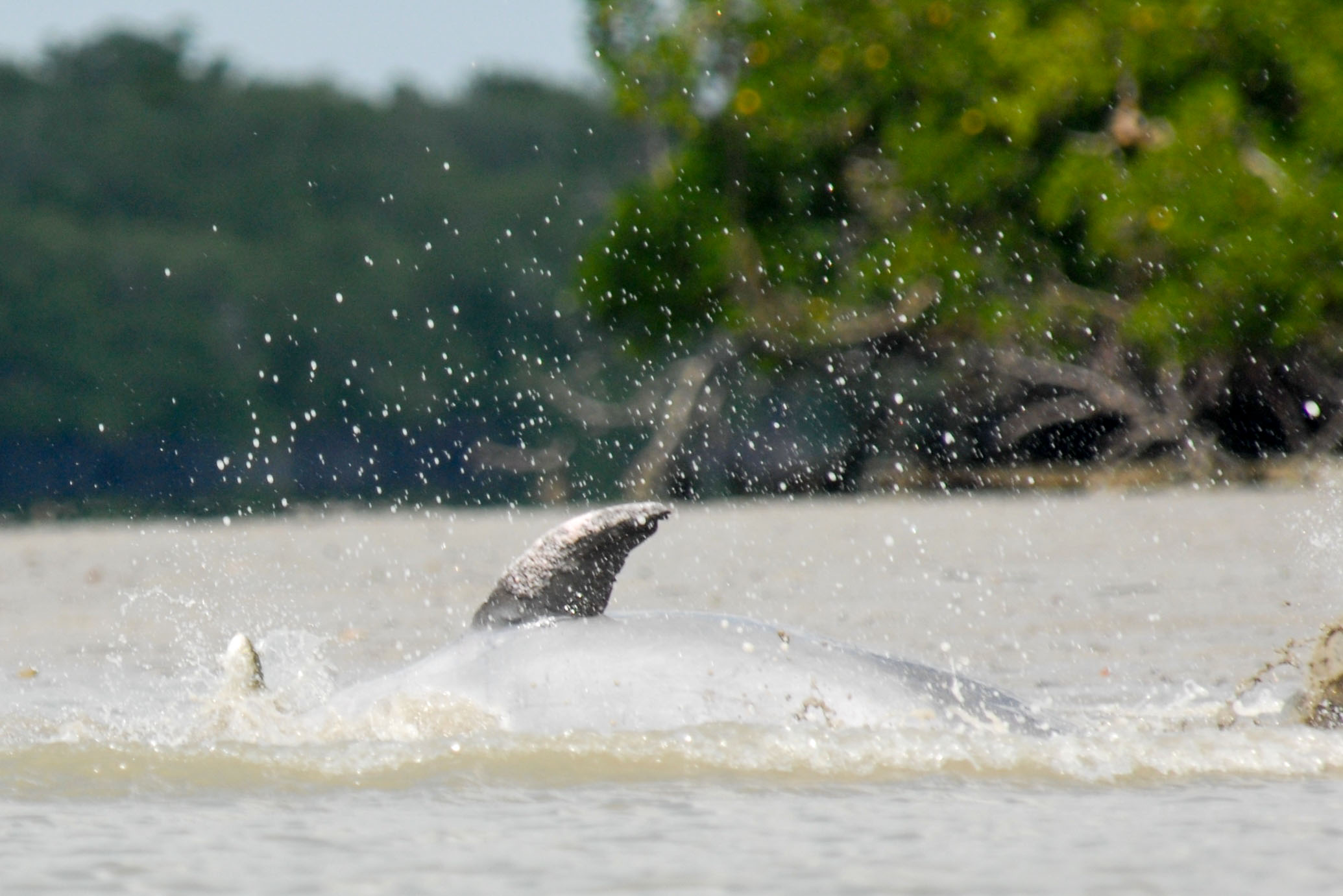
the dolphin heads back toward deeper water…
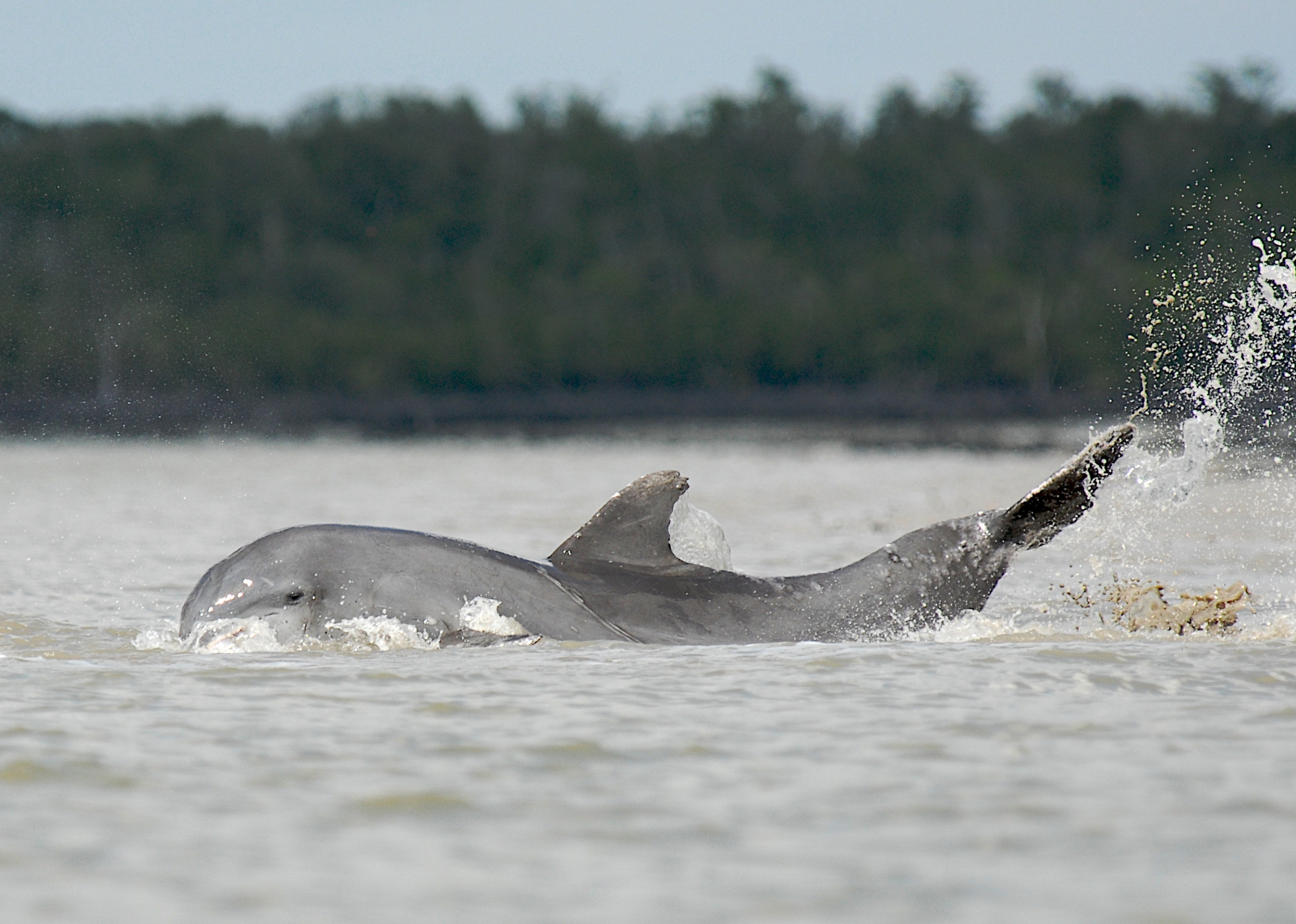
Ratatouille strand feeding in Coon Key Pass
…which can be awkward.
While pelicans seem to be the bird that benefits from the barrier feeding along the seawalls, it is the egrets and herons that are able to get in on the action when dolphins feed along the mudflats.
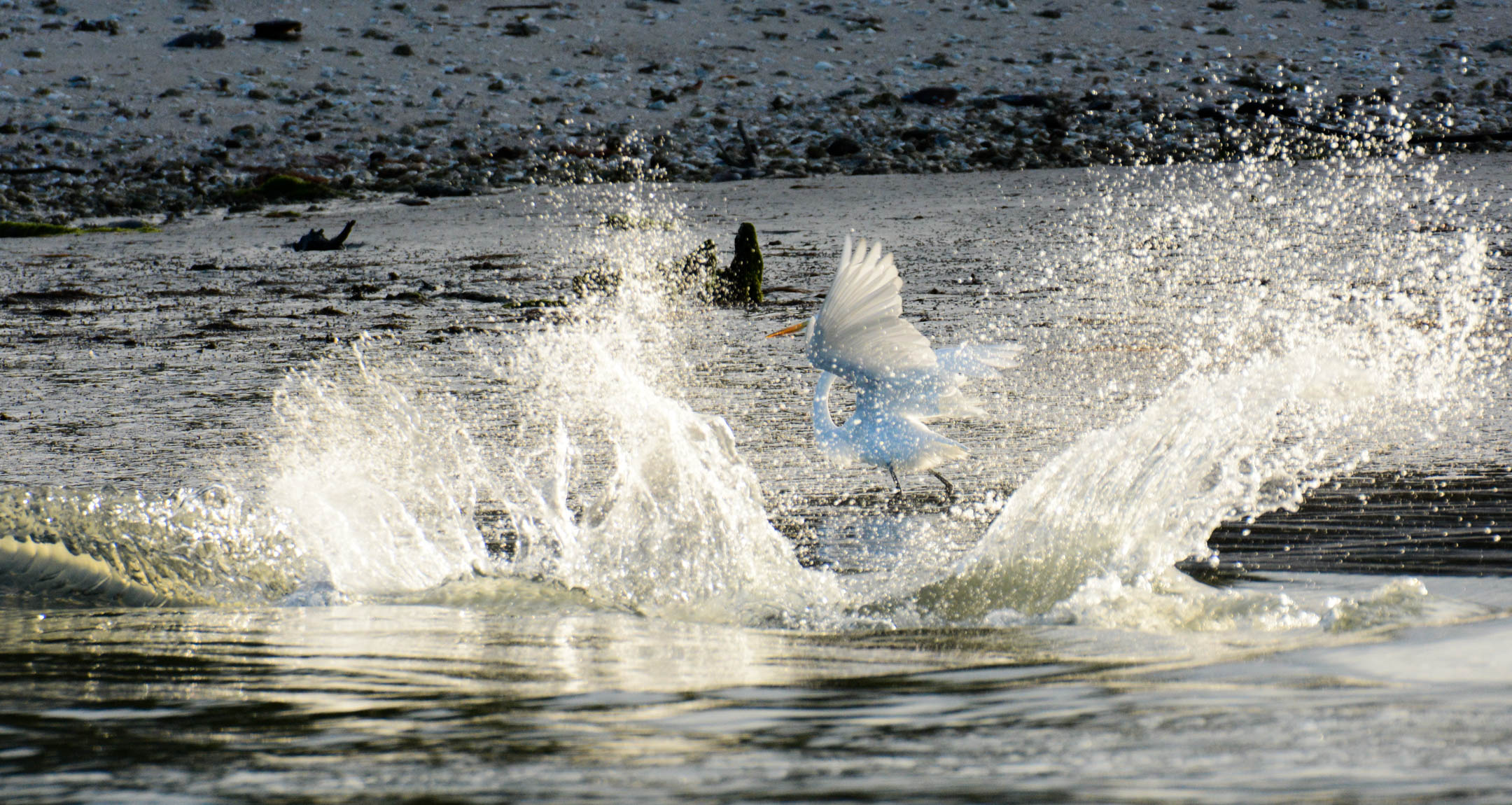
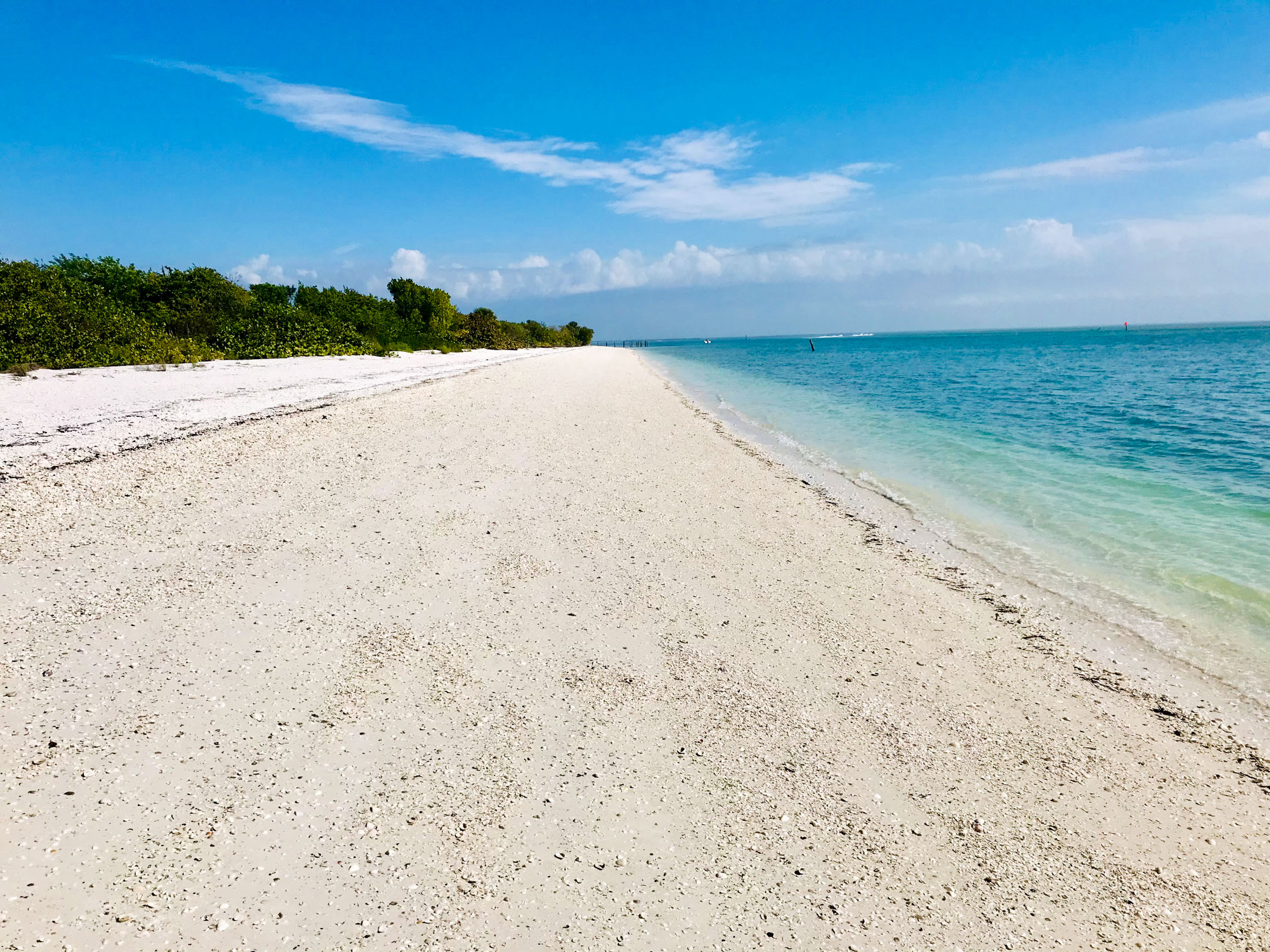
So far we have looked at the concrete seawall barriers that dolphins in Area One near the Big Marco capris Pass have learned to exploit. And we have seen how dolphins at the other end of the island In Coon Key Pass have figured out how to use the sloping mudflats to their advantage. But consider the dolphins that live in the near shore waters of the open Gulf of Mexico (The Dolphin Study Area two).
The beach is an entirely different sort of barrier. Once I was walking along the beach in Naples and there was a little trough of water near the shore only a few inches deep with small bait fish milling about. Suddenly a dolphin raced toward the shore and into this shallow water, hydroplaning over a few inches of water and catching up what small fish it could before gliding into deeper water. Pretty cool.
But what do you do if there is no barrier. Well, you make one. Check out this video from BBC Earth of dolphins in another part of Florida.
One of the insights that has emerged from my 15 years of survey work around Marco Island is that there is not one, but three overlapping communities around the island. There is a community centered around The Big Marco pass, another around Caxambas and Coon Key Pass (both of which stay largely to the backwaters) and a third community that keeps to the near shore waters of the open Gulf.
This survey of a few of the foraging techniques the local dolphins employ partly explains why they may be distributed in this fashion. From a dolphin’s point of view, the three areas are very different and require different skills to successfully exploit.
How Far Do Our Local Dolphins Travel?
How Far Do the Dolphins of Naples and Marco Island Travel ? Insights on their [...]
Another Dolphin Birth: Lulu Arrives to Join The Local Community
It seems we have yet to see the end of birthing season for the dolphins [...]
The Importance of Being Skipper
The Importance of Being Skipper With the recent birth of her calf, Skipper's 2014 rescue [...]
Honest Eco in Key West: A Model for Ecotours
I Have Beheld the Future Honest Eco in Key West Sets the Standard for ethical [...]
Marco Island’s Bottlenose dolphin birthing season has begun
A local bottlenose dolphin mother and her daughter approach the birthing season together This [...]
How Many Dolphins Live Around Marco Island and How Are They Distributed
How Many Dolphins Live Around Marco Island? The results of 150 new boat-based [...]

